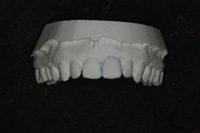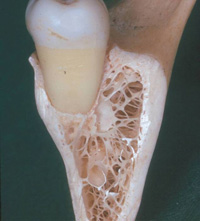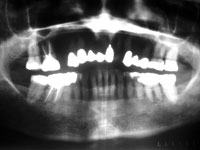When dentists think about practice building, many things come to mind, such as PR, marketing, and other ways to attract new patients. But in my experience, sometimes it helps to consider more fundamental aspects of practice building. I’ve found that by focusing on building solid, trusting relationships with my existing patients, I can grow my practice without using conventional marketing at all.
Why does this work? First, as is true with most businesses, it costs less for dental practices to offer services to existing patients than to attract new ones. When a patient returns for a hygiene appointment, decides on a cosmetic procedure, or simply chooses to continue with a particular dentist instead of switching, this represents business that was gained without incurring out-of-pocket expenses such as Yellow Page ads.
Second, happy patients talk to other people, and word-of-mouth is inexpensive. It’s also very effective, because it’s credible. People tend to view ads and other marketing materials with a bit of skepticism. But they trust their friends’ and family members’ recommendations.
Relationship building has always been important to my practice because of the type of patients I serve. My practice is located in a seasonal community in
Florida. Many of my patients are retirees who moved here relatively recently. Most have no family members nearby, so I can’t count on future generations of family as a source of new patients. Yet, I have been able to more than double my practice since I purchased it 13 years ago, to about 2,500 patients.
I’ve done this without ever spending money on advertising. Instead, I’ve found ways to make sure my patients are very comfortable and very happy with my office and the procedures I perform. When I do this, I’ve found that success in financial terms follows.
One way to understand how I’ve accomplished this is to consider the value that I offer patients. My patients, like all dental patients, come to me for 1 of 2 reasons. Either they have decided to pay for elective procedures, or they need treatment for oral health problems that are causing—or will imminently cause—discomfort or other complications. So the question becomes this: at the end of their appointments, do my patients feel they were given the level of service they should have received? I believe that for most of my patients, the answer is yes. Put another way, they understand that my services have value to them.
DELIVERING VALUE TO MY PATIENTS
“Value” can be defined in many different ways, depending on the patient. In my practice, my patients value personal attention and the ability to trust me and my staff.
I perform most procedures myself, and I tell this to new patients up front. If we’ve scheduled a 60-minute appointment, I will probably be with the patient for 54 of those minutes. In addition, my office schedules appointments in such a way that I can spend ample time on procedures.
My patients like this. Many of them have had appointments with medical professionals who seem overly rushed, or who block out only a few minutes of time to answer questions or explain procedures. When they learn their experience in my practice will be different, it makes a strong, positive impression.
I also place a great emphasis on explaining to patients what I recommend for them, and why. This builds trust and increases patients’ comfort level. They are more relaxed.
Spending time on explanations also helps my patients understand my rationale for recommending procedures. Like all dentists, after I’ve diagnosed a problem—whether it be periodontal disease, a cracked tooth, or a denture that no longer fits properly—I may be aware of several treatment options. Some might be more costly. Some might not be as effective or durable. But just because I know this doesn’t mean the patient does. So I take the time to explain why I believe a particular treatment option is best for that patient at that time. If more than 1 option is suitable, I explain the advantages and disadvantages of each. This way, patients understand that my recommendations are not based on how much money I might make or other self-serving reasons, but on what is in each patient’s best interest. This also helps build patient trust.
Another way I give my practice a personal touch is to make myself available to patients in off-hours. My answering machine gives my home number. Patients know they can reach me at any time if necessary.
Finally, I have found a way to bring a piece of my personal life into the office. I breed and grow orchids. Some years ago, I began bringing orchids that I’d grown into the office. It started as a way to soften and brighten the office space, but I soon realized that it does much more. The orchids make for great conversation pieces. They help take my patients’ minds off dental procedures about which they may be anxious. They help personalize my practice by adding something of my off-hours interests to the standard dental office decor.
HELPING PATIENTS FEEL COMFORTABLE
Another aspect of building trust is to help patients feel comfortable. Explaining procedures in advance helps patients feel less anxious, which helps. But I also pay attention to physical comfort. In my practice, ensuring physical comfort goes beyond anesthetics. I also look for other ways to reduce pain. Because I treat many senior citizens, a large percentage of my patients are what would be considered “more sensitive” patients. The tissues of older patients are more frail, more vulnerable to abrasion and bruising. So I look for ways to minimize any tissue trauma that may result from a procedure. For example, I only use 30-gauge needles. In addition to being more frail, many of my patients are on medications that cause dry mouth. For this reason, when Kodak introduced its SureSoft intraoral x-ray film packet, I immediately began using it in my practice. These packets have a soft, cushioned edge that is easier on patients’ gums. The concept is simple, but it’s a little touch that makes a big difference in the patient’s experience. Even when I don’t mention that we’re using new film packets, my patients notice and thank me.
Another aspect of physical comfort is the chair itself. I offer neck rests to my patients—wraparound neck pillows like the ones often used on airplanes. Patients who suffer from neck or back pain appreciate this touch. And I look for ways to shorten the time in the chair whenever possible. As an example, for impressions, I’ve switched to a fast-setting impression material so patients won’t need to wait as long in the chair for this procedure.
CONCLUSION
There will always be a place for advertising and other marketing techniques in dentistry. Some dentists may find that they need to proactively seek new patients if they want to grow their practices. But my practice shows that in many cases, focusing on service instead of growth for its own sake also merits consideration. Building trusting relationships with patients pays off personally, of course. It can pay off professionally as well.
Dr. Valentini is a member of the ADA, the Florida Dental Association, and South Palm Beach County Dental Association. A 1985 graduate of the NYU School of Dentistry and a member of the Omicron Kappa Upsilon National Dental Honor Society, he has owned his practice in Delray Beach, Fla, for 13 years. He can be reached at (561) 276-4372.











